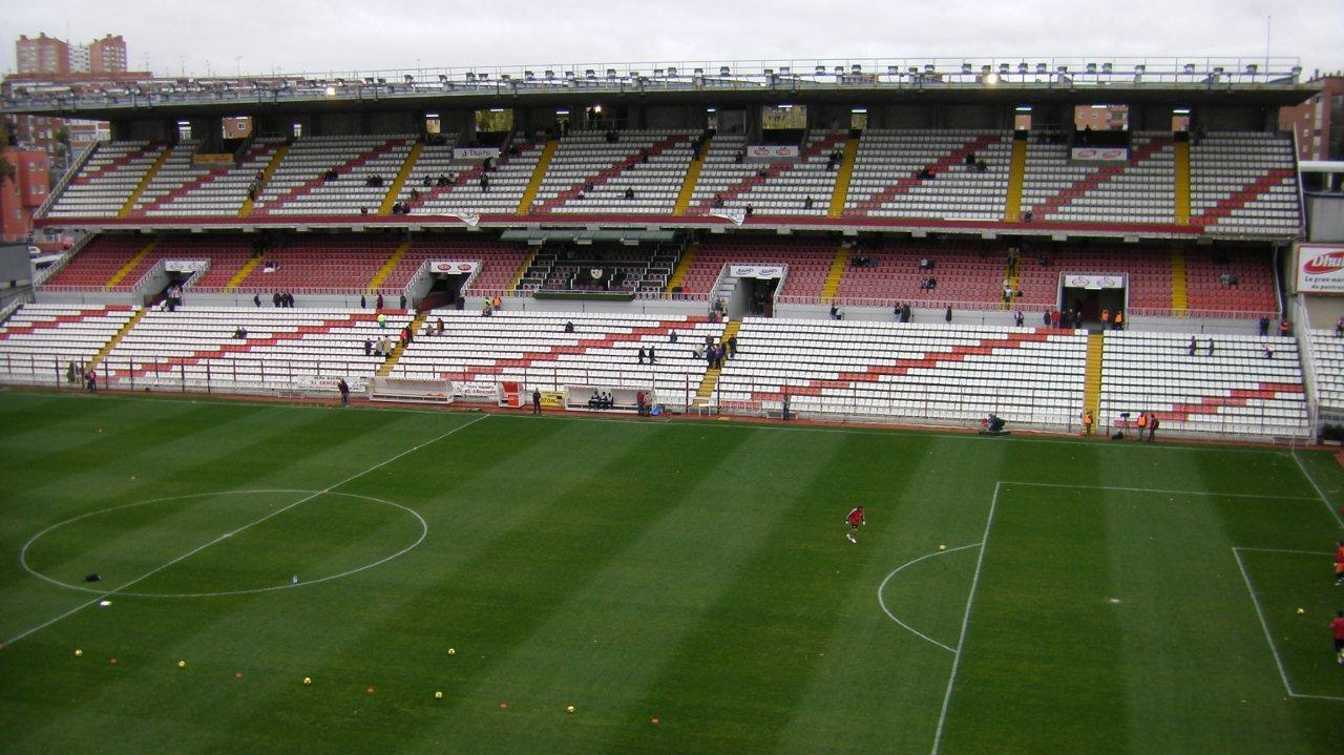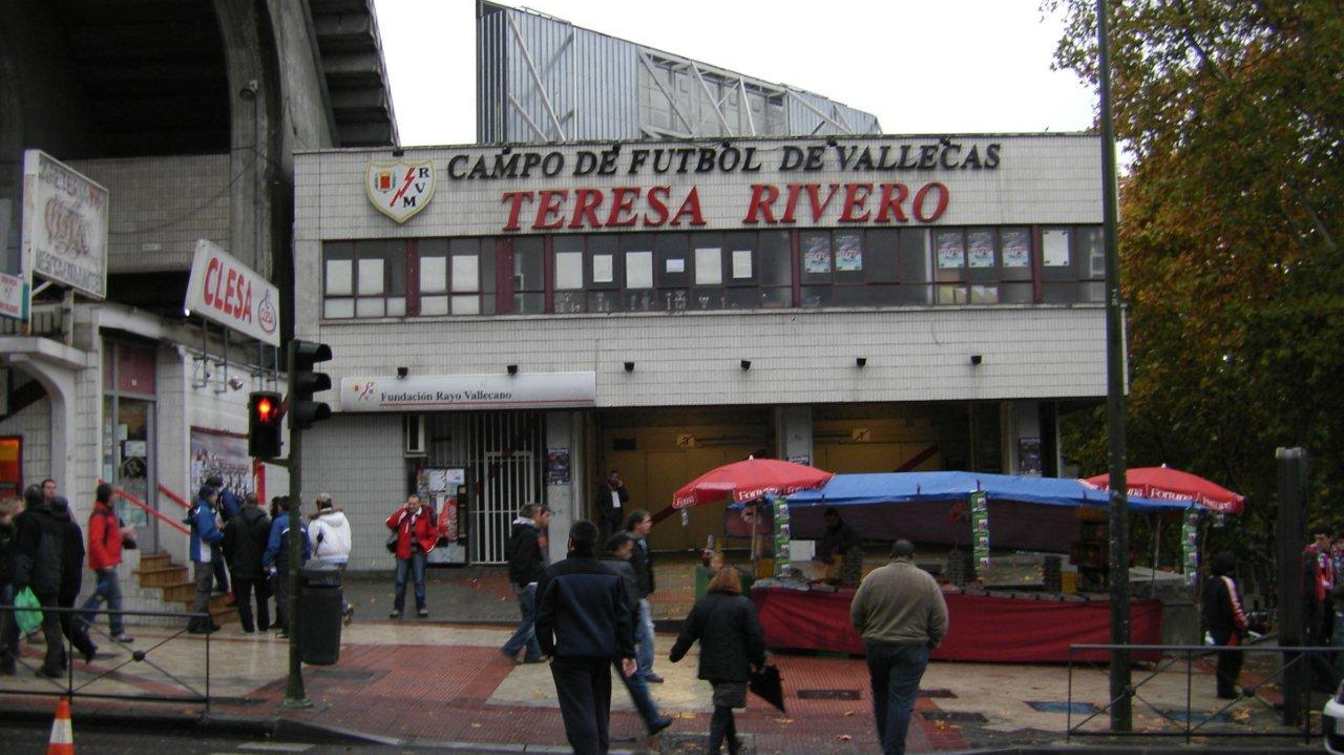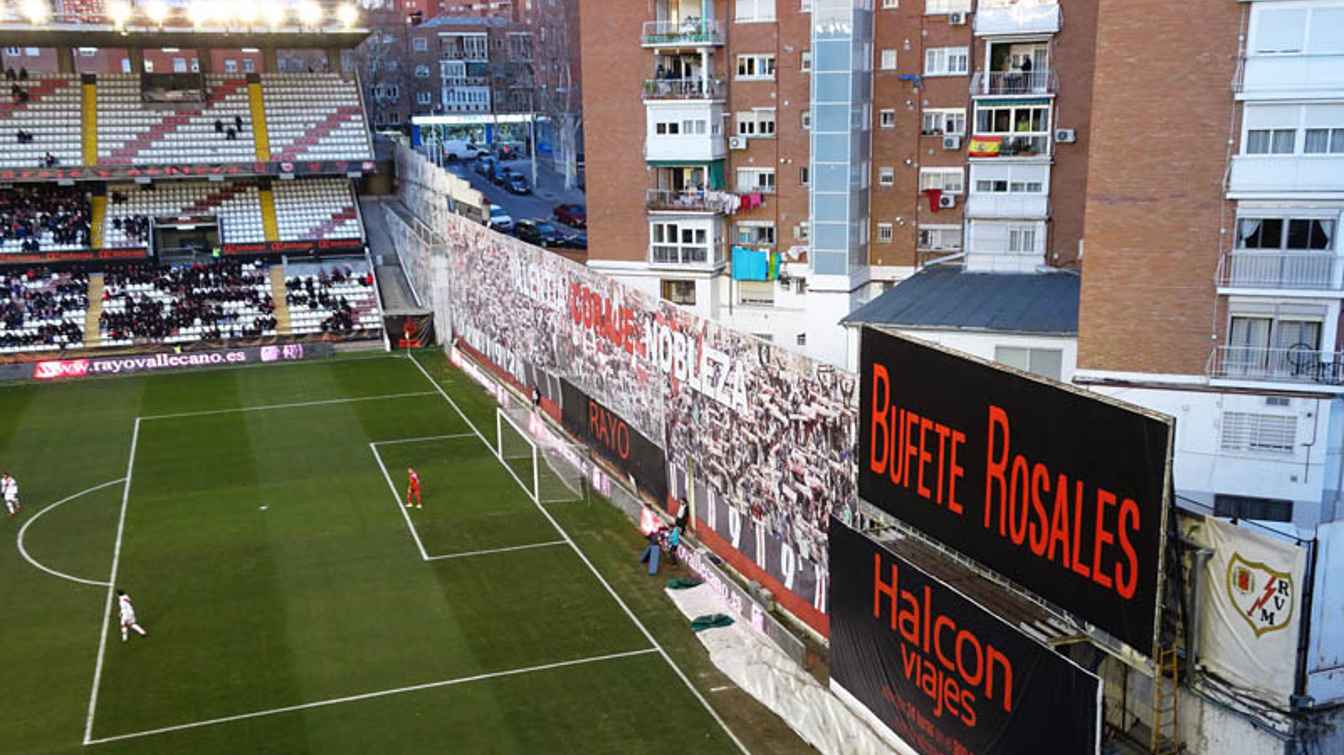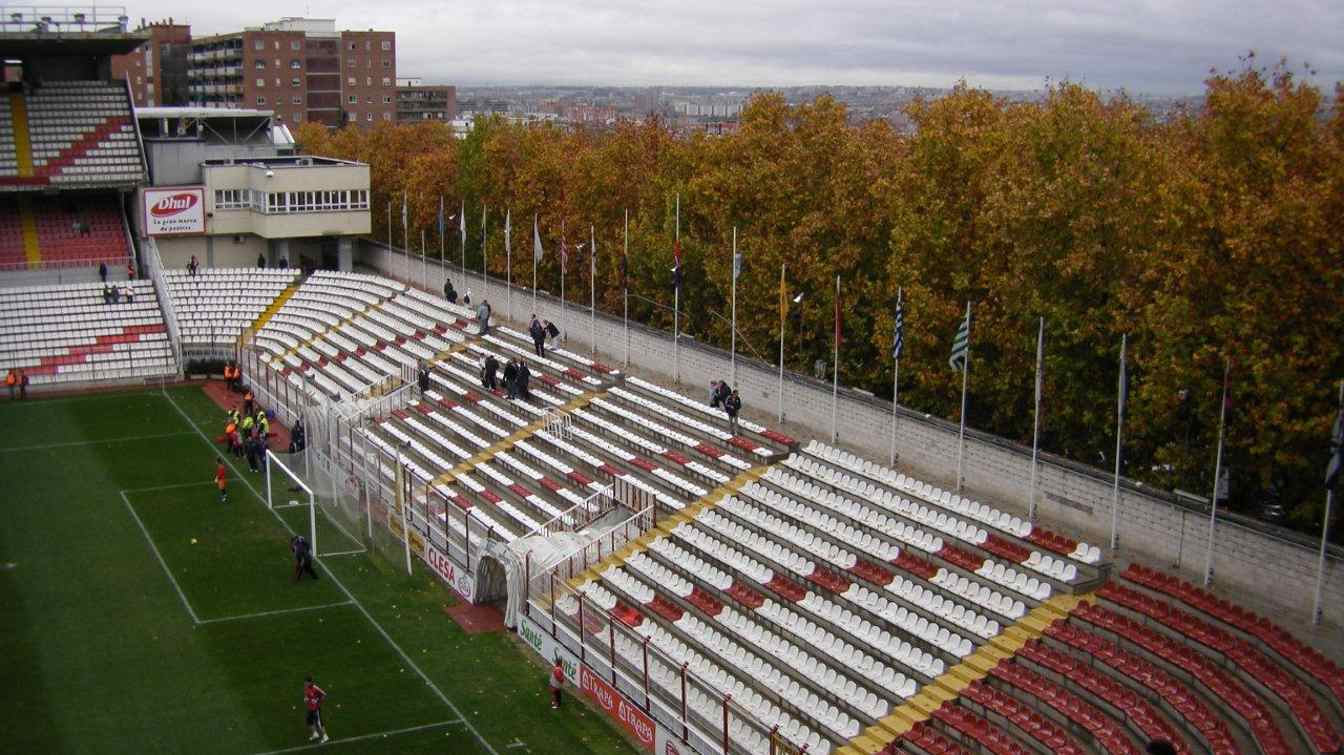Spain: Fuss in Madrid - will Rayo Vallecano leave their stadium?
source: StadiumDB.com; author: Miguel Ciołczyk Garcia
 For several weeks now, the media have been constantly reporting on the move of Madrid's third club out of its stadium. If it comes to fruition, Rayo, which takes its name and identity from the Vallecas district, will have to leave it and will lose a piece of history along with the facility.
For several weeks now, the media have been constantly reporting on the move of Madrid's third club out of its stadium. If it comes to fruition, Rayo, which takes its name and identity from the Vallecas district, will have to leave it and will lose a piece of history along with the facility.
Advertisement
Turbulent anniversary
In May 2024, Rayo supporters will begin to celebrate the centenary of the creation of a club with a rich and beautiful history. Since 1924, the club has played 21 seasons in the Primera, scoring 810 points, making it 23rd in the historic LaLiga table according to Marca. This is an impressive result, as Rayo are a modest club from the Vallecas district, with a small budget (€52m in revenue compared to FC Barcelona's €1.25bn in 2022/23).
However, the celebrations were disrupted before they began, as on 3 February, in an interview with AS, Madrid's Autonomous Community President Isabel Díaz Ayuso announced that her government, together with the club's management, was looking for land for a new facility for Rayo, as continuing to play at the Campo de Fútbol de Vallecas was 'unsustainable' in the long term.
Upgrading or moving?
Rayo president Raúl Martín Presa has stated that the stadium became obsolete several years ago
. Reform is said to be impossible for several reasons, the two most important being lack of funds and space, as there are residential buildings directly adjoining the 15,000-seater in the heart of Vallecas (some of which can even be used to watch the game).
The most tangible proof of the lack of space is the wall that separates the stadium from the buildings where the north stand behind the goals should stand. Leaving aside the obvious conundrum that this significantly reduces capacity, the presence of the wall, even though it is already part of the identity of the club and the stadium, demonstrates the problem of lack of space. A potential reform cannot in any way 'enlarge' the stadium.
Political row
The club needs a stadium adapted to the current realities. We will [...] start negotiations soon. The idea is for us [the Madrid Autonomous Community] to give up the land and for them [the club] to pay for a new stadium
announced Isabel Díaz Ayuso.
The words of the president, who belongs to the right-wing People's Party (PP), were outraged by the left-wing grouping 'Más Madrid', which advocated for Rayo to remain in the stadium, arguing that the announcement was decisively rejected by the fans and residents of Vallecas, members, supporters' clubs and affected businesses who knew nothing about it
. Más Madrid also accused Díaz Ayuso of putting the interests of speculators ahead of those of the residents and fans of Vallecas
and proposed that the mayor rewrite the stadium to the city (it is currently leased to the club by the Autonomous Community).
The city's mayor, José Luis Martínez Almeida, also from the PP, tried to calm the mood by advocating the construction of a new facility, but in Vallecas. At the same time, he stressed that it would be a mistake to stay at the old venue because it has very, very few possibilities for development from an urban planning point of view, but also from a stadium structure point of view
.
"Rayo is from Vallecas"
Infobae has checked what the mood is in Vallecas, and the street poll (with few exceptions) leaves no doubt. Rayo is from Vallecas, not from Chamberí or Pozuelo, but from Vallecas
, resolves one resident. Footballer Isi Palazón agrees, telling Relevo that if there is a reform, like in any other building [...], we can stay there
.
Socios are speaking out against the policies of the community president, but also remain distrustful of the club's president, Raúl Martín Presa. Many believe that he is the one who has neglected the stadium, whose walls are now covered with the inscriptions Presa, vete ya!
(Presa, go away!
). Why a 30,000-seat stadium when 15,000 is enough?
asks one supporter rhetorically for Infobae.
For his part, former Rayo and current Bournemouth coach Andoni Iraola stated in an interview with AS that The ideal solution that everyone would like would be to renovate and modernize the stadium
. Iraola stressed that the uniqueness of the stadium stems precisely from the fact that it is at the heart of Vallecas life, and it would be a shame to lose this.
Where will new facility be built?
Renovation, although it would undoubtedly be the best option for fans, does not seem to be in the plans of either the club or the Autonomous Community. As a result, there is speculation about the location of the new stadium. A conciliatory option to alleviate fan resistance involves locating the new facility within Vallecas. There is no room in the Puente de Vallecas district, which together with the aforementioned Villa de Vallecas makes up the Vallecas district, due to dense housing.
However, El Periódico de España indicates that one of two municipal sports centres, Campo Deportivo Municipal Alberto Garcia and Campo de fútbol José Durán could be sold to the club and a facility for Rayo would be built there. Both pitches with their surrounding areas have a larger surface area than the Rayo stadium.
Another possibility is the Villa de Vallecas district located south-east of the stadium, which is less populated and has more undeveloped land, but it is by no means certain that fans will be happy with a move of five kilometers or more. El Debate points to Ensanche de Vallecas, where Rayo's sports town is located. However, we will have to wait a little while for official announcements to judge the decisions of the club and politicians.
Advertisement

 StadiumDB
StadiumDB
 ©
©  ©
©  ©
©  ©
©